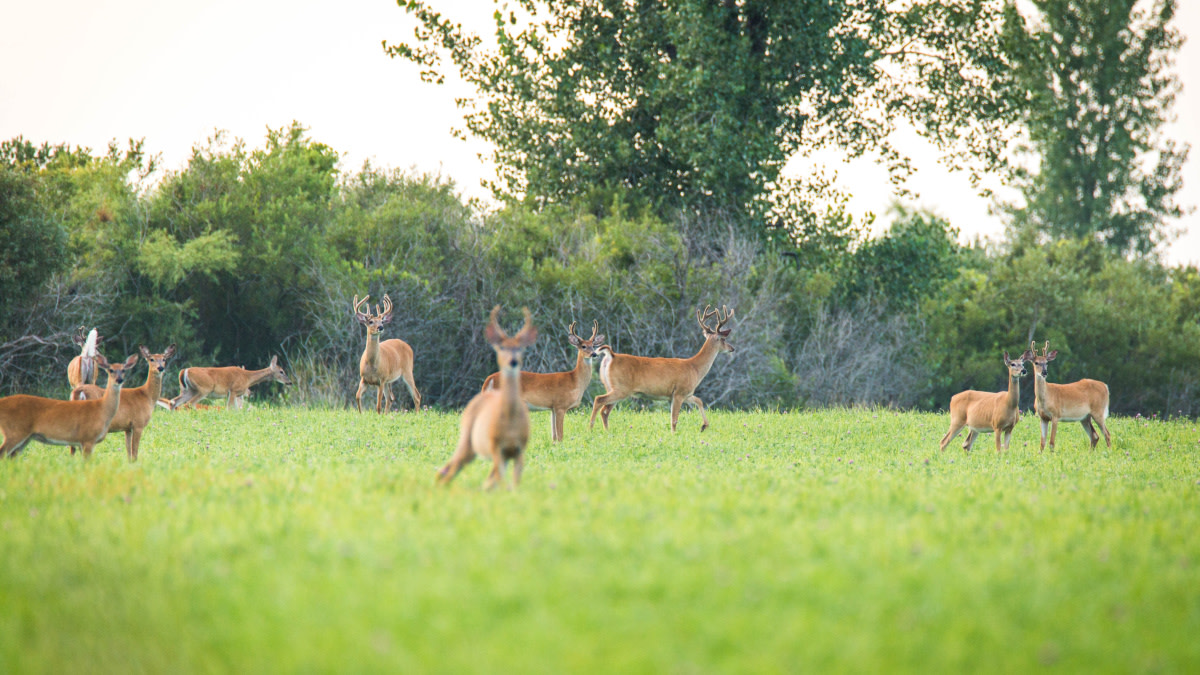
Whitetails might be the furthest thing from your mind this time of year. Between honey-do projects and time spent on the lake, it’s too easy for deer season sneak up on you. Like we previously discussed with shooting your bow, don’t wait until the weekend before opener to hit the woods looking for deer sign. If you want to make the most of the dog days and increase your odds at filling a tag this fall, here are some tips for summer scouting public lands whitetails.
The Nuances of Summer Scouting
Many would argue that spring and fall scouting are far more productive than summer scouting. While this is generally true, summer scouting shouldn’t be overlooked. The struggle with summer scouting is that whitetail patterns are often very different now than when deer season opens. To make things more difficult, vegetation is thick and overgrown, concealing all but the heaviest of deer trails. Waist-high grass when it’s 90 degrees and humid is just an ass kicker in general.
But summer scouting is still worth the effort, especially for states with early openers in the Great Plains and Southeast.
Each year, bucks begin to strip their velvet around the first week of September. Up until this point, whitetails live a very lackadaisical life. Bucks that are normally reclusive and seldom show themselves in daylight can often be found feeding in the wide open, well before sunset. Summer patterns will change quickly once that velvet is gone, but archers can often get five to 10 days of patternable hunting in early September.
Another pro for summer patterns is that deer can often be found in places that are easy to access. Unlike later in the season on public lands, there isn’t a dire need to hike miles into the woods in search of unpressured deer. They have generally been left alone all summer and are more comfortable living with increased human activity.
What to Look For
When conducting your public lands scouting in summer, food sources are king. Destination food sources, bedding, and food-to-bed transitions will be most productive this time of year. As you scour the woods, keep an eye out for old rubs and scrapes. These will still be visible and can clue you in on where bucks like to hang come October.
The Hunting Public recently put out some great content on summer whitetail scouting. According to Aaron Warbritton, in their recent YouTube series titled “Mapping Whitetails,” deer will bed in different areas as the season changes. If you find a bed in the summer, there’s a good chance that’s where they will be bedding during the season opener.
“Deer usually bed on the edge of thick cover, yet maintain a view of approaching danger,” Warbritton said. “Deer will always bed in areas in which they have a wind, sight, or hearing advantage.”
Warbritton has a unique approach that few other hunters practice. He suggests physically placing yourself within the deer bed so you can see what the deer sees. This will help you plan your approach and choose a setup just outside the deer’s field of view. Besides beds, The Hunting Public crew likes to key in on water.
“Don’t overlook ponds. Ponds offer great habitat diversity and typically have everything a deer needs, all within a small area. Most ponds offer thick cover for bedding, multiple food sources, are overlooked by other hunters, and, of course, offer a reliable water source.”
If you find a place where you think a stand would be perfect come September, consider how to make low impact entries and exits. You can start with an aerial map to find lowlands, creeks, drainages, or thick vegetation that are ideal for concealed movement, but you should physically walk them in the summer. Unlike in a few months, it’s no big deal if you bump deer right now. Make a mistake in July so you don’t show your silhouette or walk through swirling winds once fall arrives.
Trail Camera Strategy
Trail cameras (I like anything from the Moultrie line) can also play a valuable role in summer scouting. The most popular strategy is to use bait, which will pull in plenty of deer from the surrounding area. This won’t help you kill a buck, but it’ll provide an inventory of what caliber whitetails are around.
Alternatively, leaving the bait at home will give you a better idea as to the deer’s actual patterns. Sometimes introducing food will make deer move in areas they normally wouldn’t, giving you a false sense of their travels. I prefer to set out multiple cams that are focused on funnels and bed-to-food transitions.
My preferred strategy on public lands is to place un-baited cameras in June and let them soak until the week of opener. Although deer generally accept human pressure a little better this time of year, mature bucks are different animals. Aside from poking around to set trail cams, I don’t want to bump them any more than necessary. One camera check prior to season opener is just enough to know when and where to strike. The worst thing you can do is check trail cams too often, especially ones on public lands.
A few summer scouting missions can pay dividends come fall. Although you’d ideally hit the woods before creeks are high and grass is tall, you can still get a lay of the land in July. There’s plenty to learn by seeking out food and beds and deploying a couple trail cams. So blow off that landscaping project and leave the bass alone for a weekend—there are deer to be studied.
Feature image via Captured Creative.




